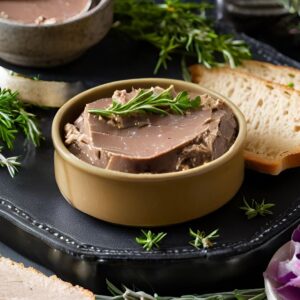Effectively following the directives of Sous Chefs and the Chef de Cuisine is crucial for a Chef de Partie to ensure smooth kitchen operations and maintain high culinary standards. This guide outlines how to understand orders, provide feedback, and ensure compliance with kitchen standards.
Understanding Orders
Understanding orders from Sous Chefs and the Chef de Cuisine is a fundamental aspect of a Chef de Partie’s role. Accurate comprehension and execution of these directives ensure smooth kitchen operations and maintain the high standards expected in a professional kitchen. This guide outlines the key practices for effectively understanding and implementing orders.
Active Listening
Active listening is crucial for accurately understanding orders and instructions.
Full Attention
- Focus: Pay complete attention when orders are given. Avoid distractions and focus entirely on the instructions.
- Body Language: Face the person speaking and show attentiveness through your posture.
Eye Contact
- Engagement: Maintain eye contact with the person giving the order to demonstrate attentiveness and respect.
- Trust: Eye contact helps build trust and ensures the speaker feels heard.
Non-Verbal Cues
- Observation: Pay attention to non-verbal cues such as gestures, facial expressions, and body language, which can provide additional context to the verbal instructions.
- Interpretation: Understand the emotions and urgency behind the instructions through non-verbal signals.
Clarification
Clarifying any uncertainties is essential to prevent mistakes and ensure tasks are executed correctly.
Ask Questions
- Inquisitiveness: If any part of the order is unclear, ask for clarification immediately. This helps avoid misunderstandings and ensures accuracy.
- Specificity: Ask specific questions to get detailed answers.
Repeat Back
- Confirmation: Repeat the order back to the Sous Chef or Chef de Cuisine to confirm understanding. This practice helps verify that you have correctly understood the instructions.
- Precision: Ensure your repetition includes all the critical details.
Details Matter
- Attention to Detail: Pay attention to specific details such as portion sizes, cooking times, and presentation requirements.
- Accuracy: Verify the specifics to ensure precision in execution.
Note-Taking
Taking notes can help remember complex orders and special instructions.
Write Down Key Points
- Documentation: Keep a small notebook or use a kitchen whiteboard to jot down important details and reminders.
- Highlights: Note down key points that are critical to the task.
Organize Notes
- Structure: Organize your notes in a way that makes them easy to reference quickly during busy periods.
- Categories: Categorize notes by type of task or order for easy retrieval.
Review Regularly
- Consistency: Review your notes regularly to ensure you haven’t missed any critical information.
- Updates: Keep notes up-to-date with any changes or new instructions.
Communication Skills
Effective communication is a two-way street and is essential for understanding and executing orders.
Clear and Concise
- Clarity: When confirming orders or asking questions, be clear and concise to avoid any confusion.
- Simplicity: Use simple and direct language to ensure understanding.
Feedback Loop
- Updates: Create a feedback loop where you can provide updates on task completion and any issues encountered.
- Responsiveness: Respond promptly to any queries or feedback from your superiors.
Respect and Professionalism
- Conduct: Communicate respectfully and professionally with your superiors and colleagues to maintain a positive work environment.
- Tone: Use a polite and professional tone in all communications.
Implementing Orders
Once orders are understood, the next step is proper implementation.
Prioritization
- Urgency: Prioritize tasks based on urgency and importance. Ensure time-sensitive orders are addressed promptly.
- Efficiency: Allocate time and resources effectively to manage multiple tasks.
Organization
- Workspace: Organize your workstation and prep materials in a way that allows for efficient execution of orders.
- Tools: Ensure all necessary tools and ingredients are readily available.
Quality Control
- Standards: Continuously monitor the quality of your work to ensure it meets the kitchen’s standards.
- Inspection: Regularly check the final product before presenting it.
Handling Complex Orders
Complex orders require additional attention and coordination.
Break Down Tasks
- Segmentation: Divide complex orders into manageable tasks and tackle them systematically.
- Step-by-Step: Approach each component of the order step-by-step to avoid being overwhelmed.
Team Coordination
- Collaboration: Work closely with your team to coordinate efforts, especially for large or intricate orders.
- Communication: Maintain clear communication with team members to ensure everyone is aligned.
Double-Check
- Verification: Double-check each component of the order to ensure accuracy and completeness before presenting the final dish.
- Detail Review: Ensure every aspect of the order is correct and meets the specifications given.
Continuous Improvement
Continual learning and improvement help enhance your ability to understand and execute orders effectively.
Seek Feedback
- Assessment: Regularly seek feedback from Sous Chefs and the Chef de Cuisine to identify areas for improvement.
- Receptivity: Be open to constructive criticism and use it to improve your skills.
Reflect on Performance
- Self-Review: Reflect on your performance after each shift to identify successes and areas for growth.
- Goal Setting: Set personal goals for improvement based on your reflections.
Training and Development
- Learning: Participate in training sessions and workshops to improve your culinary skills and knowledge.
- Practice: Continuously practice and refine your techniques to enhance proficiency.
Providing Feedback
Providing feedback is a crucial skill for a Chef de Partie. Constructive feedback helps improve kitchen operations, fosters a collaborative environment, and ensures that high culinary standards are maintained. This guide outlines best practices for effectively providing feedback to Sous Chefs, the Chef de Cuisine, and fellow team members.
Timeliness
The timing of feedback is critical to its effectiveness.
Appropriate Moments
- Choose the Right Time: Offer feedback during appropriate moments, preferably during quieter periods or after service. Avoid giving feedback during peak hours unless it is urgent.
- Immediate Feedback: For time-sensitive issues, provide immediate feedback to prevent recurring mistakes and to address problems quickly.
- Scheduled Reviews: Participate in regular reviews or debrief sessions where feedback can be shared in a structured and constructive manner.
Constructive Approach
Feedback should be constructive, focusing on positive outcomes and improvements.
Positive Tone
- Encouraging: Use a positive tone and focus on the issue, not the person. Highlight strengths before addressing areas for improvement.
- Supportive Language: Use supportive language to show you are on the same team and working towards a common goal.
Specificity
- Clear Examples: Be specific about what needs to be improved and why. Provide clear examples to illustrate your points.
- Detailed Feedback: Avoid vague statements; detail what happened, why it’s an issue, and how it can be improved.
Actionable Suggestions
- Practical Advice: Offer actionable suggestions for improvement. Instead of just pointing out a problem, suggest ways to solve it.
- Follow-Up Plans: Propose follow-up plans to ensure the feedback is implemented and to monitor progress.
Openness to Feedback
Being open to receiving feedback is as important as giving it.
Receptive Attitude
- Encourage Feedback: Demonstrate a receptive attitude towards feedback from Sous Chefs, the Chef de Cuisine, and colleagues. This openness encourages a culture of continuous improvement.
- Welcoming Criticism: Show that you value and welcome constructive criticism as a tool for growth.
Active Listening
- Attentive Listening: Listen actively to the feedback being given, without interrupting or becoming defensive. Acknowledge the feedback and thank the person providing it.
- Clarification: Ask for clarification if any part of the feedback is unclear.
Reflection and Action
- Consider Feedback: Reflect on the feedback received and take action to implement any necessary changes or improvements.
- Show Progress: Demonstrate that you have considered the feedback and made efforts to improve.
Clear Communication
Clear communication is essential for effective feedback.
Direct and Respectful
- Honest Communication: Communicate feedback directly and respectfully. Avoid vague statements and be clear about what needs to be addressed.
- Respectful Tone: Maintain a respectful tone, even when delivering critical feedback.
Two-Way Dialogue
- Interactive Feedback: Encourage a two-way dialogue where team members can discuss feedback openly. This helps in understanding different perspectives and finding collaborative solutions.
- Open Discussion: Foster an environment where everyone feels comfortable discussing feedback and suggestions.
Non-Verbal Cues
- Observing Cues: Pay attention to non-verbal cues such as body language and facial expressions, both when giving and receiving feedback.
- Consistent Body Language: Ensure your body language is consistent with your message to avoid mixed signals.
Fostering a Collaborative Environment
Feedback should contribute to a positive and collaborative kitchen environment.
Supportive Culture
- Promote Positivity: Promote a supportive culture where feedback is seen as an opportunity for growth rather than criticism.
- Encourage Openness: Encourage openness and transparency in communication.
Team Involvement
- Inclusive Feedback: Involve the team in the feedback process by encouraging everyone to share their observations and suggestions.
- Collective Improvement: Foster a sense of collective improvement and teamwork.
Recognition and Praise
- Balance Feedback: Balance feedback with recognition and praise for good performance. Acknowledging positive efforts boosts morale and motivation.
- Celebrate Successes: Regularly celebrate team successes to build a positive environment.
Handling Negative Feedback
Negative feedback should be handled with care and sensitivity.
Private Setting
- Confidential Discussions: Deliver negative feedback in a private setting to avoid embarrassing the individual in front of their peers.
- Respect Privacy: Respect the individual’s privacy and dignity during the feedback session.
Focus on Improvement
- Constructive Criticism: Emphasize the goal of improvement and support rather than blaming or criticizing. Help the individual understand the impact of their actions and how to improve.
- Solution-Oriented: Focus on solutions and ways to prevent the issue from recurring.
Follow-Up
- Check Progress: Follow up on negative feedback to ensure that improvements are being made and to provide additional support if needed.
- Continuous Support: Offer ongoing support and guidance to help the individual succeed.
Continuous Improvement
Regular feedback contributes to continuous improvement in the kitchen.
Regular Check-Ins
- Frequent Feedback: Conduct regular check-ins with team members to discuss progress and provide ongoing feedback.
- Open Communication: Maintain open lines of communication for continuous improvement.
Feedback Systems
- Structured Systems: Implement formal feedback systems such as performance reviews and anonymous feedback forms to gather comprehensive insights.
- Systematic Approach: Use these systems to ensure feedback is consistent and thorough.
Learning and Development
- Encourage Growth: Encourage a culture of learning and development where feedback is used as a tool for personal and professional growth.
- Training Opportunities: Provide opportunities for training and professional development.
Ensuring Compliance with Kitchen Standards
Ensuring compliance with kitchen standards is a fundamental responsibility of a Chef de Partie. Maintaining high standards in a professional kitchen involves understanding how standards are presented, published, communicated, and executed. This guide outlines the general processes for achieving and maintaining compliance with these standards.
Presentation of Standards
Standards in a kitchen are typically presented in a clear and accessible manner to ensure all team members understand and can adhere to them.
Documentation
- Manuals and Guidelines: Standards are documented in manuals and guidelines that provide detailed instructions on various aspects of kitchen operations, including hygiene, safety, and food preparation.
- Checklists: Checklists are used to ensure that all necessary steps are followed in processes like cleaning, food preparation, and equipment maintenance.
Digital Platforms
- Tablets and Computers: Many kitchens use digital platforms to present standards, making them easily accessible on tablets or computers. This can include digital SOPs (Standard Operating Procedures), training modules, and real-time updates.
- Apps and Software: Dedicated kitchen management software can help track compliance and update staff on new standards or procedures.
Visual Aids
- Posters and Charts: Posters, charts, and infographics are used to visually communicate key standards. These are often displayed in strategic locations around the kitchen, such as near handwashing stations, prep areas, and cooking stations.
- Instructional Videos: Short instructional videos can be used to demonstrate proper techniques and procedures.
Publishing Standards
Publishing standards ensures that all staff have access to the necessary information to perform their duties correctly and safely.
Employee Handbooks
- Comprehensive Guides: Handbooks provided to new employees typically include comprehensive information about kitchen standards. These handbooks serve as a reference for employees to understand their responsibilities.
- Regular Updates: Ensure handbooks are regularly updated to reflect any changes in procedures or regulations.
Online Resources
- Internal Websites and Intranet Systems: Many organizations publish standards on internal websites or intranet systems. This allows staff to access the latest updates and guidelines at any time.
- Downloadable Resources: Provide downloadable PDFs and documents for easy access and printing.
Training Materials
- Onboarding Programs: Integrate standards into training materials used during onboarding to ensure that new employees are trained according to the latest standards.
- Ongoing Training: Include standards in ongoing professional development programs to reinforce their importance and ensure continuous compliance.
Communicating Standards
Effective communication of standards is essential to ensure that all team members are aware of and understand their responsibilities.
Team Meetings
- Regular Discussions: Hold regular team meetings to discuss and reinforce kitchen standards. These meetings provide an opportunity to address any questions or concerns.
- Updates and Announcements: Use meetings to announce any updates or changes to standards.
Briefings
- Pre-Shift Briefings: Conduct pre-shift briefings to communicate specific standards and procedures relevant to the upcoming service. This ensures that everyone is prepared and aligned.
- Post-Shift Debriefs: Use post-shift debriefs to review compliance and discuss any issues that arose.
Feedback Systems
- Two-Way Communication: Establish feedback systems to allow for two-way communication about standards. Staff can ask questions and provide input on how standards are implemented.
- Anonymous Feedback: Provide a way for staff to give anonymous feedback if they are uncomfortable raising issues directly.
Executing Standards
Executing standards involves putting the documented and communicated guidelines into practice effectively.
Training and Education
- Continuous Training: Continuous training and education are vital for ensuring that staff understand and can execute the standards. This includes hands-on training sessions and refresher courses.
- Cross-Training: Encourage cross-training so that staff understand the standards and procedures for different roles.
Monitoring and Auditing
- Regular Inspections: Conduct regular monitoring and auditing of kitchen practices to ensure compliance with standards. This can include routine inspections and surprise audits to check adherence to protocols.
- Checklists and Logs: Use checklists and logs to track daily compliance with hygiene and safety standards.
Performance Metrics
- Tracking Compliance: Use performance metrics to track compliance with standards and identify areas for improvement. Metrics can include hygiene scores, safety incident rates, and customer satisfaction.
- Reporting Systems: Implement reporting systems to document compliance and any deviations from standards.
Ensuring Continuous Compliance
Maintaining continuous compliance with kitchen standards requires ongoing effort and commitment.
Updates and Revisions
- Regular Reviews: Regularly review and update standards to reflect new regulations, industry best practices, and feedback from staff. Keeping standards current ensures ongoing relevance and effectiveness.
- Staff Involvement: Involve staff in the review process to gather insights and suggestions for improvements.
Role of Leadership
- Modeling Compliance: Leadership plays a crucial role in enforcing standards. Sous Chefs and the Chef de Cuisine should model compliance, provide guidance, and support the team in adhering to standards.
- Active Enforcement: Actively enforce standards and address non-compliance promptly and fairly.
Culture of Excellence
- Valuing Compliance: Foster a culture of excellence where compliance with standards is valued and prioritized. Encourage staff to take pride in maintaining high standards.
- Recognition and Rewards: Recognize and reward staff who consistently comply with standards and contribute to a positive kitchen environment.
Collaboration and Teamwork in the Kitchen
Collaboration and teamwork are essential elements in a professional kitchen, ensuring efficient operations and high-quality culinary output. For a Chef de Partie, fostering a collaborative environment and working effectively with the team are crucial. This guide outlines the key aspects of collaboration and teamwork in the kitchen.
Importance of Collaboration
Collaboration in the kitchen enhances efficiency, improves food quality, and creates a positive work environment.
Efficiency
- Streamlined Operations: Collaborative efforts streamline kitchen operations, reducing the time needed to complete tasks and minimizing errors.
- Task Management: Efficient teamwork allows for better management of tasks, ensuring that orders are completed on time.
Quality
- Consistency: Teamwork ensures that all aspects of food preparation and presentation meet the highest standards.
- Attention to Detail: Multiple team members working together can catch and correct mistakes, leading to higher quality dishes.
Morale
- Positive Work Environment: A collaborative environment boosts team morale, making the kitchen a more enjoyable place to work.
- Support System: Team members can rely on each other for support during busy or stressful periods.
Communication
Clear and open communication is the foundation of effective teamwork.
Regular Updates
- Information Sharing: Share important information and updates with the team regularly, including changes in menu, special instructions, and any issues that arise.
- Briefings: Conduct regular briefings before and after shifts to ensure everyone is informed and aligned.
Active Listening
- Inclusivity: Listen to team members’ input and feedback attentively, fostering a culture of respect and inclusivity.
- Feedback Reception: Be open to receiving feedback and act on it to improve operations.
Clear Instructions
- Concise Directives: Provide clear, concise instructions to ensure everyone understands their tasks and responsibilities.
- Confirmation: Encourage team members to repeat instructions back to confirm understanding.
Supporting Colleagues
Supporting colleagues fosters a strong team dynamic and ensures smooth kitchen operations.
Assistance
- Help and Guidance: Offer help to colleagues when they are overwhelmed or facing challenges, including sharing tasks or providing guidance.
- Teamwork: Promote a sense of teamwork by encouraging mutual support.
Encouragement
- Motivation: Encourage and motivate team members, especially during busy or stressful periods.
- Positive Reinforcement: Use positive reinforcement to boost morale and productivity.
Respect
- Acknowledgment: Show respect for each team member’s role and contributions, recognizing that every position is vital to the kitchen’s success.
- Professionalism: Maintain professionalism in all interactions to build a respectful and cohesive team environment.
Delegation
Effective delegation is key to managing workload and ensuring tasks are completed efficiently.
Trust
- Confidence: Trust team members to handle their assigned tasks and responsibilities, building their confidence and autonomy.
- Empowerment: Empower team members by giving them ownership of their tasks.
Clarity
- Clear Expectations: Clearly define tasks and expectations when delegating to ensure that everyone understands their role and deadlines.
- Detailed Instructions: Provide detailed instructions and be available for questions.
Follow-Up
- Monitoring: Monitor progress and provide support as needed, but avoid micromanaging to allow team members to work independently.
- Feedback: Give constructive feedback to help team members improve their performance.
Problem-Solving
Collaborative problem-solving enhances teamwork and leads to better solutions.
Identify Issues
- Early Detection: Quickly identify and communicate any issues that arise to prevent problems from escalating.
- Transparency: Maintain transparency about challenges to foster a problem-solving culture.
Brainstorm Solutions
- Team Input: Encourage team input when brainstorming solutions, leveraging diverse perspectives for more effective outcomes.
- Collaborative Planning: Work together to develop and implement plans to address issues.
Implement and Review
- Action Steps: Implement solutions promptly and review their effectiveness, making adjustments as necessary to improve processes.
- Continuous Improvement: Use feedback from the review process to make continuous improvements.
Building a Positive Team Culture
Creating a positive team culture is essential for long-term success and satisfaction in the kitchen.
Recognition
- Achievements: Recognize and celebrate the achievements and contributions of team members through verbal praise, awards, or team celebrations.
- Positive Reinforcement: Use positive reinforcement to motivate and encourage team members.
Inclusivity
- Diversity: Foster an inclusive environment where all team members feel valued and included, encouraging diversity and different perspectives.
- Equal Opportunities: Ensure that all team members have equal opportunities for growth and development.
Conflict Resolution
- Prompt Action: Address conflicts promptly and fairly to maintain a positive team dynamic.
- Learning Opportunities: Use conflicts as opportunities to strengthen relationships and improve team dynamics.
Continuous Improvement
Continuous improvement in collaboration and teamwork leads to a more effective and harmonious kitchen.
Feedback Loop
- Constructive Feedback: Establish a feedback loop where team members can regularly provide and receive constructive feedback.
- Regular Reviews: Conduct regular reviews to discuss performance and areas for improvement.
Training and Development
- Skill Enhancement: Invest in ongoing training and development opportunities for the team to enhance skills and promote professional growth.
- Knowledge Sharing: Encourage knowledge sharing among team members to improve overall team performance.
Innovation
- Encourage Creativity: Encourage innovation and creativity in problem-solving and kitchen processes to keep the team engaged and improve overall performance.
- Experimentation: Allow team members to experiment with new techniques and ideas to foster a culture of continuous learning and improvement.
Handling Challenges in the Kitchen
Handling challenges effectively is a crucial skill for a Chef de Partie. The fast-paced and demanding environment of a professional kitchen requires the ability to manage problems quickly and efficiently. This guide outlines strategies for addressing common challenges in the kitchen.
Identifying Challenges
Recognizing potential problems early is the first step in effectively handling challenges.
Observation
- Regular Checks: Pay close attention to all aspects of kitchen operations. Regularly check the quality of ingredients, equipment functionality, and team performance.
- Spot Checks: Conduct random checks during service to catch any issues that may arise unexpectedly.
Communication
- Open Dialogue: Maintain open lines of communication with team members. Encourage them to report any issues or concerns immediately.
- Feedback Sessions: Hold regular feedback sessions to discuss any ongoing issues and how they can be addressed.
Anticipation
- Predictive Planning: Anticipate potential challenges based on past experiences and current conditions. Proactively prepare for busy periods, equipment maintenance, and supply shortages.
- Risk Assessment: Regularly conduct risk assessments to identify and mitigate potential problems before they occur.
Problem-Solving Techniques
Effective problem-solving requires a structured approach to identify, analyze, and resolve issues.
Define the Problem
- Information Gathering: Clearly define the issue at hand. Gather all relevant information and understand the root cause.
- Problem Breakdown: Break down complex problems into smaller, manageable parts to address each component effectively.
Generate Solutions
- Brainstorming: Brainstorm possible solutions with the team. Consider the pros and cons of each option.
- Innovative Thinking: Encourage innovative thinking and out-of-the-box solutions to tackle challenges creatively.
Implement the Solution
- Action Plan: Choose the most viable solution and implement it promptly. Assign responsibilities and ensure everyone understands their role.
- Resource Allocation: Ensure that the necessary resources are available for implementing the solution.
Evaluate Results
- Performance Review: After implementing the solution, evaluate its effectiveness. Adjust as necessary to improve the outcome.
- Continuous Improvement: Use feedback from the evaluation to continuously improve processes and prevent similar issues in the future.
Managing Stress
Managing stress is essential for maintaining focus and efficiency during challenging situations.
Stay Calm
- Composure: Remain calm and composed, even under pressure. A calm demeanor helps prevent panic and allows for clearer thinking.
- Breathing Techniques: Use deep breathing techniques to manage stress and maintain focus.
Prioritize Tasks
- Critical Tasks First: Prioritize tasks based on urgency and importance. Focus on critical issues first and delegate less urgent tasks.
- Task List: Maintain a task list to keep track of priorities and deadlines.
Take Breaks
- Scheduled Breaks: Ensure that you and your team take short breaks to rest and recharge, especially during long shifts.
- Mental Health: Encourage team members to take mental health breaks if needed to prevent burnout.
Effective Communication
Clear and effective communication is vital for addressing challenges efficiently.
Direct Communication
- Specific Instructions: Communicate issues directly and clearly with the team. Provide specific instructions and ensure everyone understands their responsibilities.
- Follow-Up: Follow up on instructions to ensure they are being implemented correctly.
Active Listening
- Team Input: Listen to team members’ concerns and suggestions. This helps identify problems early and develop better solutions.
- Feedback Loops: Create feedback loops where team members can regularly share their thoughts and feedback.
Regular Updates
- Status Reports: Keep the team informed about the status of ongoing issues and solutions being implemented.
- Communication Channels: Use clear communication channels, such as team meetings and message boards, to relay information.
Resource Management
Efficient resource management is key to overcoming challenges related to supplies and equipment.
Inventory Control
- Accurate Records: Maintain accurate inventory records and regularly check stock levels. Order supplies in advance to avoid shortages.
- Stock Rotation: Implement a stock rotation system to use older supplies first and minimize waste.
Equipment Maintenance
- Regular Maintenance: Ensure that all kitchen equipment is regularly maintained and in good working order. Address any malfunctions immediately.
- Preventive Maintenance: Schedule regular preventive maintenance to avoid unexpected equipment failures.
Waste Reduction
- Waste Tracking: Implement practices to minimize food waste and optimize resource usage. This helps manage costs and maintain efficiency.
- Sustainable Practices: Encourage sustainable practices, such as composting and recycling, to reduce the kitchen’s environmental impact.
Time Management
- Efficient Scheduling: Use effective time management techniques to ensure tasks are completed promptly. Prioritize tasks, set realistic deadlines, and avoid procrastination to maintain a smooth workflow.
- Time Audits: Conduct regular time audits to identify areas where efficiency can be improved.
Time Management Techniques for Students
Effective time management is essential for students to balance schoolwork, extracurricular activities, and personal time. Here are some key techniques to help manage your time better.
Prioritization
Prioritizing means figuring out which tasks are most important and need to be done first.
Eisenhower Matrix
The Eisenhower Matrix helps you categorize tasks into four categories:
- Urgent and Important: Do these tasks right away (e.g., studying for a test tomorrow).
- Important but Not Urgent: Schedule these tasks for later (e.g., working on a project due next week).
- Urgent but Not Important: Delegate these tasks if possible (e.g., chores that can be done by someone else).
- Not Urgent and Not Important: Consider not doing these tasks (e.g., watching TV when you have homework).
How to Use the Eisenhower Matrix
- List All Tasks: Write down all the tasks you need to complete.
- Categorize: Place each task in one of the four categories.
- Action: Immediately start on tasks that are urgent and important. Schedule tasks that are important but not urgent. Delegate tasks that are urgent but not important. Eliminate or minimize tasks that are neither urgent nor important.
Task Lists
Creating a task list helps keep track of what needs to be done.
To-Do Lists
- Daily To-Do Lists: Write down all your tasks for the day and check them off as you finish them.
- Weekly To-Do Lists: Plan out your tasks for the entire week to stay organized and prepared.
Kanban Boards
- Visual Tracking: Use a visual board to track tasks through different stages (e.g., To Do, In Progress, Done).
- Customization: Customize your Kanban board with categories that fit your workflow.
Time Blocking
Time blocking means setting aside specific times for different activities.
Schedule Blocks
- Dedicated Hours: Dedicate specific hours of the day to particular tasks (e.g., 4 PM – 5 PM for homework, 5 PM – 6 PM for sports practice).
- Consistent Routine: Establish a consistent routine to build habits and reduce decision fatigue.
How to Time Block
- Identify Tasks: List all the tasks you need to complete.
- Allocate Time: Assign specific time blocks to each task based on their importance and urgency.
- Stick to the Schedule: Follow your time blocks diligently to ensure all tasks are completed.
Setting Realistic Deadlines
Set deadlines that are achievable to keep yourself on track.
SMART Goals
- Specific: Clearly define what you want to accomplish.
- Measurable: Determine how you will measure your progress.
- Achievable: Ensure your goal is realistic and attainable.
- Relevant: Make sure your goal is relevant to your overall objectives.
- Time-bound: Set a clear deadline for your goal.
How to Set SMART Goals
- Define the Goal: Clearly state what you want to achieve.
- Break Down the Steps: Outline the steps needed to reach the goal.
- Set a Timeline: Establish a timeline for completing each step.
Delegation
Delegation means sharing tasks with others to lighten your workload.
Share Responsibilities
- Group Projects: Work with classmates on group projects to divide the workload.
- Chores at Home: Ask for help with chores at home to free up time for studying.
How to Delegate
- Identify Tasks: List the tasks that can be shared.
- Choose Helpers: Select people who can help with these tasks.
- Assign Tasks: Clearly communicate what needs to be done and provide any necessary instructions.
Avoiding Procrastination
Procrastination is putting off tasks that you should be doing. Use these techniques to stay on track.
Pomodoro Technique
- Work in Intervals: Work for a set time (e.g., 25 minutes) and then take a short break (e.g., 5 minutes). Repeat this cycle to stay focused.
Five-Minute Rule
- Start Small: Commit to working on a task for just five minutes. Often, once you start, it’s easier to keep going.
How to Avoid Procrastination
- Break Tasks into Smaller Steps: Divide large tasks into smaller, more manageable steps.
- Set Short Deadlines: Set shorter deadlines to create a sense of urgency.
- Reward Yourself: Give yourself small rewards for completing tasks.
Monitoring and Reflecting
Regularly check how you’re doing and think about what’s working and what’s not.
Daily Reviews
- End-of-Day Check: Spend a few minutes at the end of each day reviewing what you finished and plan for the next day.
Weekly Reviews
- Weekly Check-In: At the end of each week, look at your overall progress, identify any problems, and plan for the upcoming week.
How to Monitor and Reflect
- Set Aside Time: Schedule regular times for reflection and review.
- Analyze Progress: Look at what you’ve accomplished and where you can improve.
- Adjust Plans: Make any necessary adjustments to your plans and strategies.
Team Collaboration in the Kitchen
Team collaboration is essential in a professional kitchen to ensure efficiency, high-quality food production, and a positive working environment. For a Chef de Partie, fostering a collaborative atmosphere and working effectively with colleagues is crucial. This guide outlines best practices for achieving strong team collaboration in the kitchen.
Importance of Team Collaboration
Effective team collaboration enhances overall kitchen performance and contributes to a successful dining experience.
Efficiency: Collaboration streamlines processes, reduces preparation time, and minimizes errors. Quality: Working together ensures that every dish meets the highest standards of quality and presentation. Morale: A collaborative environment boosts team morale, making the kitchen a more enjoyable and productive place to work.
Communication
Clear and open communication is the foundation of successful team collaboration.
Regular Updates: Keep the team informed with regular updates about daily tasks, menu changes, and any special instructions. Active Listening: Listen actively to team members’ input and feedback to foster a culture of respect and inclusivity. Clear Instructions: Provide clear and concise instructions to ensure everyone understands their tasks and responsibilities.
Best Practices for Communication
- Morning Briefings: Conduct daily morning briefings to outline the day’s tasks, discuss any changes to the menu, and address any potential issues.
- Feedback Sessions: Hold regular feedback sessions where team members can voice their opinions and suggest improvements.
- Open Door Policy: Encourage an open door policy where team members feel comfortable approaching their supervisors with any concerns or ideas.
Mutual Support
Supporting colleagues is key to building a strong, cohesive team.
Assistance: Offer help to team members who are overwhelmed or facing challenges. Sharing the workload ensures that tasks are completed efficiently. Encouragement: Encourage and motivate each other, especially during busy or stressful periods. Positive reinforcement boosts morale and performance. Respect: Show respect for each team member’s role and contributions, recognizing that every position is vital to the kitchen’s success.
Best Practices for Mutual Support
- Team Pairing: Pair less experienced team members with more experienced ones for mentorship and skill development.
- Check-Ins: Regularly check in with team members to see how they are managing their tasks and if they need any assistance.
- Celebration of Achievements: Celebrate team successes and individual achievements to foster a sense of community and shared purpose.
Delegation
Effective delegation ensures that tasks are distributed appropriately and completed efficiently.
Trust: Trust team members to handle their assigned tasks and responsibilities. This builds confidence and autonomy within the team. Clarity: Clearly define tasks and expectations when delegating. Ensure that everyone understands their role and deadlines. Follow-Up: Monitor progress and provide support as needed without micromanaging. Regular check-ins help ensure that tasks are on track.
Best Practices for Delegation
- Task Lists: Create detailed task lists outlining who is responsible for what. This ensures accountability and clarity.
- Role Rotation: Rotate roles periodically to ensure all team members gain experience in different areas of the kitchen.
- Regular Feedback: Provide regular feedback on delegated tasks to help team members improve and learn.
Problem-Solving
Collaborative problem-solving enhances teamwork and leads to better solutions.
Identify Issues: Quickly identify and communicate any issues that arise. Early detection prevents problems from escalating. Brainstorm Solutions: Encourage team input when brainstorming solutions. Diverse perspectives often lead to more effective outcomes. Implement and Review: Implement solutions promptly and review their effectiveness. Make adjustments as necessary to improve processes.
Best Practices for Problem-Solving
- Daily Stand-Ups: Hold quick daily stand-up meetings to discuss any immediate issues and potential solutions.
- Problem-Solving Workshops: Conduct workshops where team members can learn and practice problem-solving techniques.
- Post-Mortem Analysis: After resolving an issue, analyze what happened and how it was resolved to prevent similar issues in the future.
Building a Positive Team Culture
A positive team culture is essential for long-term success and satisfaction in the kitchen.
Recognition: Recognize and celebrate the achievements and contributions of team members. Acknowledging hard work boosts morale and motivation. Inclusivity: Foster an inclusive environment where all team members feel valued and included. Encourage diversity and different perspectives. Conflict Resolution: Address conflicts promptly and fairly. Use conflicts as opportunities to strengthen relationships and improve team dynamics.
Best Practices for Building a Positive Team Culture
- Team-Building Activities: Organize regular team-building activities to strengthen relationships and improve teamwork.
- Inclusive Policies: Implement policies that promote inclusivity and diversity in the kitchen.
- Conflict Mediation: Train team members in conflict mediation techniques to handle disputes constructively.
Teamwork Continuous Improvement
Continuous improvement in collaboration and teamwork leads to a more effective and harmonious kitchen.
Feedback Loop: Establish a feedback loop where team members can regularly provide and receive constructive feedback. Training and Development: Invest in ongoing training and development opportunities for the team. This enhances skills and promotes professional growth. Innovation: Encourage innovation and creativity in problem-solving and kitchen processes. This keeps the team engaged and improves overall performance.
Best Practices for Continuous Improvement
- Regular Training Sessions: Schedule regular training sessions to keep skills sharp and introduce new techniques.
- Suggestion Box: Implement a suggestion box where team members can anonymously submit ideas for improvement.
- Innovation Challenges: Host periodic innovation challenges where teams can propose and test new ideas for improving kitchen operations.







